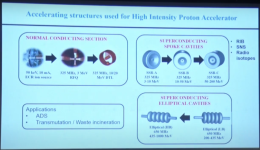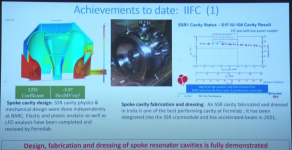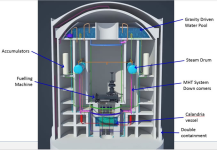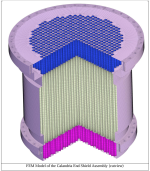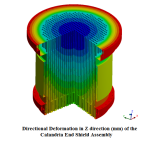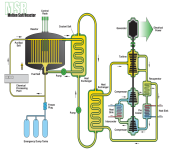In a first, Centre taps private sector to invest Rs 2.16 lakh crore in nuclear energy.
ET Bureau
Last Updated: Feb 21, 2024, 12:04:00 AM IST
The Centre will invite private companies to invest about $26 billion (₹2.16 lakh crore) in nuclear energy to increase the amount of electricity from sources that don't produce carbon dioxide emissions, said two government officials who are directly involved in the matter.
This is the first time the government is pursuing private investment in nuclear power, a non-carbon-emitting energy source that contributes less than 2% of India's total electricity generation. The funding would help India to achieve its target of having 50% of its installed electric generation capacity use non-fossil fuels by 2030, up from 42% now.
The government is in talks with at least five players - including Reliance Industries, Tata Power, Adani Power and Vedanta Ltd - to invest around ₹44,000 crore ($5.30 billion) each, the people cited said last week.
The Department of Atomic Energy and state-run Nuclear Power Corp of India (NPCIL) have held multiple rounds of discussions with the companies in the past year on the investment plan, they said. The Department of Atomic Energy, NPCIL, Tata Power, Reliance Industries, Adani Power and Vedanta did not respond to queries sent by Reuters.
With the investment, the government hopes to build 11,000 megawatts (MW) of new nuclear power generation capacity by 2040, said the people in the know, who did not want to be identified as the plan is still being finalized. NPCIL owns and operates India's nuclear power plants, with a capacity of 7,500 MW, and has committed investments for another 1,300 MW.
The people cited said the plan is for the companies to invest in the nuclear plants, acquire land and water, and undertake construction in areas outside the reactor complex. However, the rights to build and run the stations, as well as their fuel management, will rest with NPCIL, as allowed under the law, they added.
The companies are expected to earn revenue from the plant's electricity sales and NPCIL would operate the projects for a fee, they said. "This hybrid model is an innovative solution to accelerate nuclear capacity," said Charudatta Palekar, an independent power sector consultant who formerly worked for PwC.
The plan will not require any amendment to the Atomic Energy Act, 1962.
In a first, Centre taps private sector to invest Rs 2.16 lakh crore in nuclear energy
ET Bureau
Last Updated: Feb 21, 2024, 12:04:00 AM IST
Synopsis
This is the first time the government is pursuing private investment in nuclear power, a non-carbon-emitting energy source that contributes less than 2% of India's total electricity generation. The funding would help India to achieve its target of having 50% of its installed electric generation capacity use non-fossil fuels by 2030, up from 42% now.
This is the first time the government is pursuing private investment in nuclear power, a non-carbon-emitting energy source that contributes less than 2% of India's total electricity generation. The funding would help India to achieve its target of having 50% of its installed electric generation capacity use non-fossil fuels by 2030, up from 42% now.
The Centre will invite private companies to invest about $26 billion (₹2.16 lakh crore) in nuclear energy to increase the amount of electricity from sources that don't produce carbon dioxide emissions, said two government officials who are directly involved in the matter.
This is the first time the government is pursuing private investment in nuclear power, a non-carbon-emitting energy source that contributes less than 2% of India's total electricity generation. The funding would help India to achieve its target of having 50% of its installed electric generation capacity use non-fossil fuels by 2030, up from 42% now.
The government is in talks with at least five players - including Reliance Industries, Tata Power, Adani Power and Vedanta Ltd - to invest around ₹44,000 crore ($5.30 billion) each, the people cited said last week.
The Department of Atomic Energy and state-run Nuclear Power Corp of India (NPCIL) have held multiple rounds of discussions with the companies in the past year on the investment plan, they said. The Department of Atomic Energy, NPCIL, Tata Power, Reliance Industries, Adani Power and Vedanta did not respond to queries sent by Reuters.
With the investment, the government hopes to build 11,000 megawatts (MW) of new nuclear power generation capacity by 2040, said the people in the know, who did not want to be identified as the plan is still being finalized. NPCIL owns and operates India's nuclear power plants, with a capacity of 7,500 MW, and has committed investments for another 1,300 MW.
The people cited said the plan is for the companies to invest in the nuclear plants, acquire land and water, and undertake construction in areas outside the reactor complex. However, the rights to build and run the stations, as well as their fuel management, will rest with NPCIL, as allowed under the law, they added.
The companies are expected to earn revenue from the plant's electricity sales and NPCIL would operate the projects for a fee, they said. "This hybrid model is an innovative solution to accelerate nuclear capacity," said Charudatta Palekar, an independent power sector consultant who formerly worked for PwC.
The plan will not require any amendment to the Atomic Energy Act, 1962.
In a first, Centre taps private sector to invest Rs 2.16 lakh crore in nuclear energy








